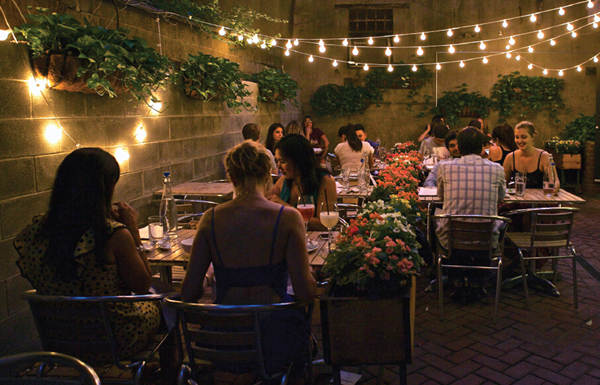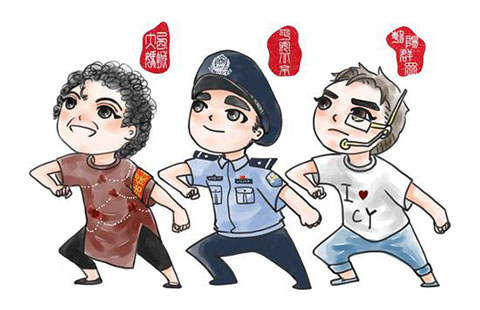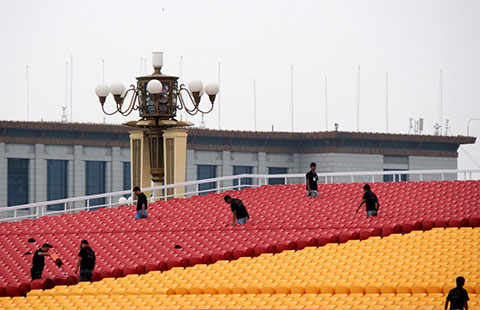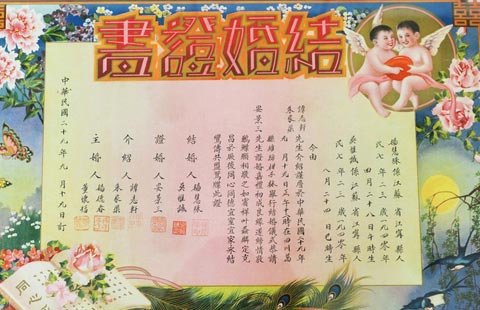Not your father’s Chinese restaurant
Updated: 2015-08-22 02:37
By HEZI JIANG(China Daily USA)
|
|||||||||
 |
|
Customers dine in the courtyard of Carma Asian Tapas in New York’s Greenwich Village on July 10. Carma, which opened in March, serves fusion cuisine with dishes such as Peking tacos. HEZI JIANG / CHINA DAILY |
Chinese restaurants are evolving in the US, drawing their inspiration from the homeland and fusion trends and relying less on typical Chinese-American fare such as chop suey and egg rolls.
While General Tso’s and sesame chicken largely remain, and the all-you-can-eat buffet places proliferate, many Chinese restaurateurs are attempting to redefine the cuisine in America, according to Yong Chen, professor at the University of California-Irvine and author of Chop Suey, USA: The Rise of Chinese Food in America.
“Chinese restaurateurs have been trying to offer Chinese food as fine dining; but their efforts have remained largely unsuccessful until recently,” Chen told China Daily. “In the past two decades, such efforts have become more visible.”
Chen added that “more professionally trained chefs and more affluent and more informed diners in Chinese restaurants” are helping drive the trend.
Going global
In June 1996, Wang Gang and his wife, Liang Li, opened their first restaurant, Meizhou Dongpo, in Beijing. “Someday we are going to cook for the whole world!” they said.
Nineteen years later, they oversee a corporation with more than 100 restaurants in China. By next year, they are going to have five restaurants in the US, with a flagship on the Las Vegas Strip.
Meizhou Dongpo opened its first US restaurant in Beverly Hills, California, in 2013, and kept its name exactly as it is in China, with the dishes selected from its menu in China. The chefs, though hired locally, were sent to China for months of training.
“We are trying to make authentic Chinese food for America,” said Wang Xiaojing, the US general manager for Meizhou Dongpo.
In recent years, many Chinese companies have implemented a rapid “going out” strategy, buying properties around the world, merging with global companies and opening foreign subsidiaries. Restaurant brands are joining the movement.
“Fame has brought us pressure and responsibility, because Chinese restaurants who are considering opening locations in the US are all looking at us,” said Wang. “If we make a success, they will take action. If we failed, they would be afraid of ‘going out.’ ”
California is known for authentic, diverse Chinese food, driven by a large population of new Chinese immigrants. In Greater East Los Angeles area — Monterey Park, Arcadia, Roland Heights and other cities nearby, no matter which province of China you are from, you will be able to find your region’s cuisine.
In place like Hollywood and Beverly Hills, however, residents don’t see the variety of Chinese cuisine. There are Panda Express outlets in shopping centers, and take-out restaurants tucked in strip malls.
Meizhou found a rooftop dining deck at the Westfield Century City mall in Beverly Hills.
To maintain its food quality, the company brought a dozen of chefs from Beijing. They debated what dishes should be on the menu, spending hours analyzing if a dish would be liked by both Chinese and American diners.
“We decided that our rule was picking what Americans would like from our traditional Meizhou Dongpo dishes,” Wang said. That way, they would not sacrifice authenticity in making dishes appealing to Americans.
Meizhou’s opening created a buzz in the Chinese community. Chinese students and immigrants were excited to see a Chinese brand they could relate to coming to California. It also got the attention of American foodies.
“Popping fiery Szechuan dumplings on a sun-drenched patio at Westfield Century City is a new kind of mind blowing,” Los Angeles magazine wrote.
Some were attracted by its authenticity.
“The times I’ve been by, at least half the patrons were Chinese, and I suspect they would not accept toned-down food,” wrote a foodie on Chow.com.
The Peking duck seemed to have gotten the most love. “I have a new respect for duck meat design, as the chef displayed such patience as he skillfully assorted each piece of meat and crispy skin,” wrote Ariel Zhu in LA Splash magazine.
“Americans like the duck the most,” said Wang. “We are making it our signature.”
Other popular items among American customers are familiar names such as kung pao chicken and shrimp and dan dan noodles. The Chinese customers usually come in for the dishes they cannot get elsewhere, like the pork hock.
Wang and his team have worked to please both their American and Chinese customers, because each group has its own preferences.
- Tsipras formally resigns, requesting snap general elections
- China-Russia drill not targeting 3rd party
- UK, France boost security
- China demands Japan face history after Abe's wife visits Yasukuni Shrine
- DPRK deploys more fire units to frontlines with ROK
- DPRK, ROK trade artillery, rocket fire at border

 Across America over the week (Aug 14 - Aug 20)
Across America over the week (Aug 14 - Aug 20)
 Stars in their eyes: leaders in love
Stars in their eyes: leaders in love
 A survival guide for singles on Chinese Valentine’s Day
A survival guide for singles on Chinese Valentine’s Day
 Beijing police publishes cartoon images of residents who tip off police
Beijing police publishes cartoon images of residents who tip off police
 Rare brown panda grows up in NW China
Rare brown panda grows up in NW China
 Putin rides to bottom of Black Sea
Putin rides to bottom of Black Sea
 The changing looks of Beijing before V Day parade
The changing looks of Beijing before V Day parade
 Nanjing displays ancient marriage, divorce certificates
Nanjing displays ancient marriage, divorce certificates
Most Viewed
Editor's Picks

|

|

|

|

|

|
Today's Top News
Emissions data won't change China policy
Preparations shutter Forbidden City, other major tourist spots
President Xi Jinping calls for crews not to ease up
Chemical plants to be relocated in blast zone
Asian sprinters on track to make some big strides
Jon Bon Jovi sings in Mandarin for Chinese Valentine's Day
Tsipras formally resigns, requesting snap general elections
DPRK deploys more fire units to frontlines with ROK
US Weekly

|

|







